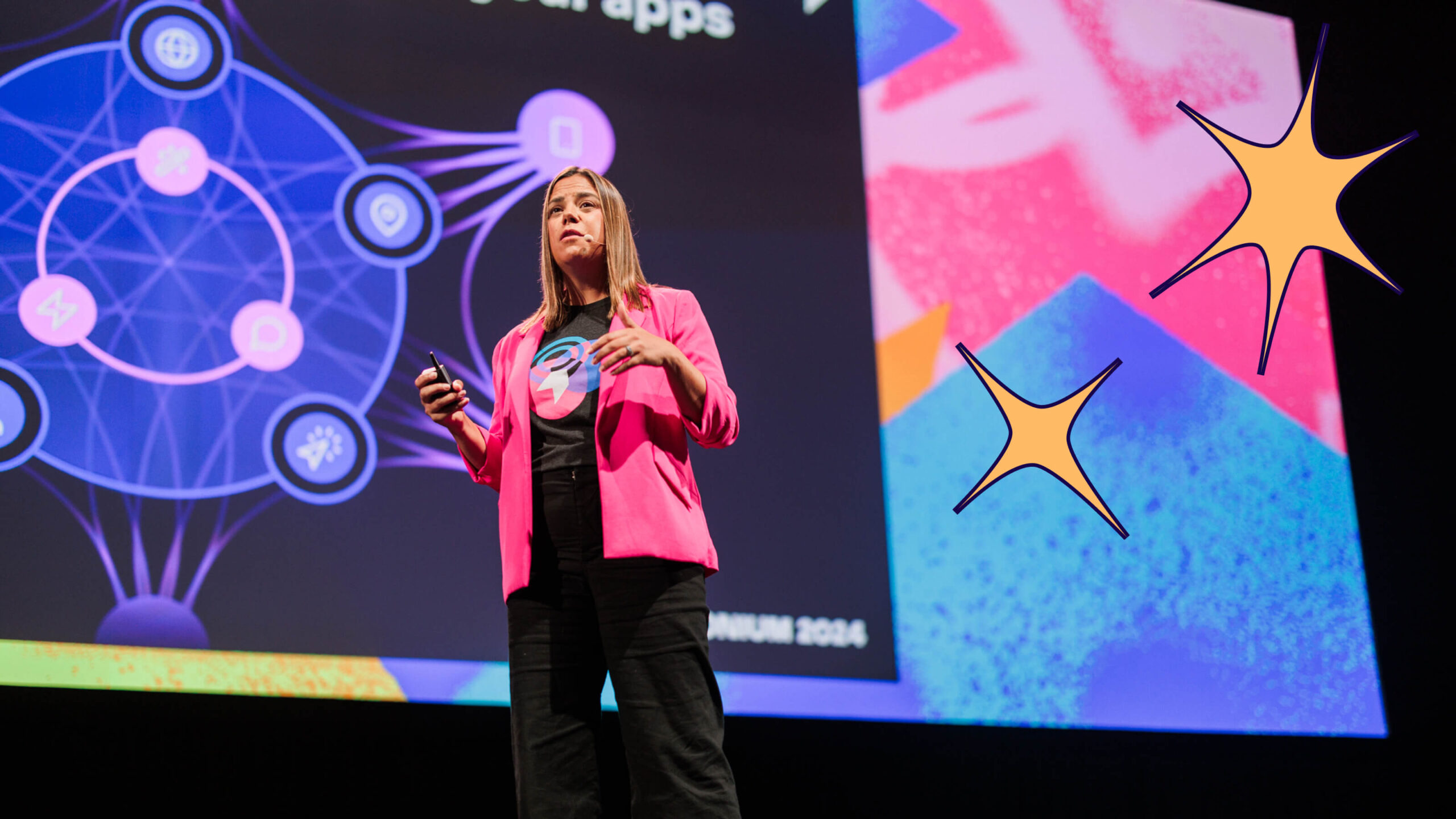Products that don’t grow, die. And dead products don’t pay all that well (unless they turn into zombies 🧟). Worse, there’s no “quick guide” or “one-size-fits-all” playbook to achieve the growth, engagement, and adoption your leaders expect.
To get people to use (and love) your product, you need personalized messaging that reaches users wherever they are, and speaks to what they care about. But if you’ve been around the block before, you know driving product outcomes with personalization isn’t as simple as it sounds. In fact, it may even be nightmare material.
Beware: Existing messaging tools aren’t built for product teams
The best product teams influence user behavior by sending the right message at the right time in the right place. It’s challenging to pull off, but it’s worth it. Personalized communication boosts engagement, conversions, product adoption, and customer satisfaction.
Product teams have long used in-app guidance to drive specific actions. But with an average one-month user retention rate of 36%, you need to turn to out-of-product channels to engage the other two thirds of users.
Product teams have traditionally relied on a disjointed combination of marketing tools and product analytics to reach non-logged-in users. Unfortunately, that means relying on your marketing team and their email tools, which aren’t built to support product teams or their use cases. Personalizing messages based on in-app behavior, timing emails around aligned in-app communications, and measuring impact are nothing short of a nightmare.
3 real-world personalization horror stories
Product teams have long struggled with reaching users across multiple channels. To prove it, three leaders from Pendo have shared their own personalization trials and tribulations.
1. Juggling siloed tools
Driving continuous improvement is a pillar of successful products. And to do this, you need qualitative and quantitative data, in one place, working with each other. Michelle Grupinski, lead product adoption manager at Pendo, was tasked with driving adoption across a user base of 33 million. With so many users across B2B and B2C use cases, there was no way to deliver a one-size-fits-one experience.
To improve product outcomes, Grupinski got granular. She focused on the first seven days of a B2C trial by promoting three different features. Grupinski used Pendo and a third-party email solution to build coordinated messaging journeys, and it “drove [her] NUTS.”
After weeks of hard work and juggling different tools, this messaging journey didn’t end up increasing conversions. And the worst part? Because her product analytics and messaging tools were siloed, Grupinski lacked the ability to understand what went wrong. 💔
2. Missing behavioral data
Traditional email tools let you personalize touch points based on user metadata, like geography and time zone. But what if you could tailor communications around behavioral categories like job-to-be-done, pain points, products used, or even features adopted? This level of segmentation helps you deliver the right message to the right user, every single time. Unfortunately, this process is manual, siloed, and prone to error.
Nichole Mace, Pendo’s SVP of product, had BIG plans for personalized user onboarding with beautifully crafted emails. Her team was ready to launch this motion after months of hard work, only to stumble upon a shocking discovery: The necessary fields and behavioral triggers she built comms around were missing 😱. To fix this and launch her emails, her dev team needed two months. Yikes.
3. In- and out-of-app message alignment
There are always users who aren’t engaging in the product regularly (or not at all). To reach them, product teams must turn to email. But aligning your in-app communications with out-of-app channels is time-consuming and riddled with complexities.
Erica Akroyd, director of customer education at Pendo, and her team set out to bolster the success of their in-app onboarding with email touches. After introducing emails personalized to user personas and use cases, her team saw second-week user retention increase by almost 300%—nearly 4x the baseline average.
The only problem? The process juggled three different tools and staggered, manual workflows, which made iteration impossible. (Noticing a theme yet?) Akroyd’s team knew they needed an easier way to reach users that weren’t logged in by combining email with behavioral data.
No tricks, just treats: Product personalization is here
As in any good horror story, the hero is here to save the day: Pendo Orchestrate, the newest addition to the Pendo One platform. With Orchestrate, you can manage in- and out-of-app channels in one place, automatically personalize messages with AI, and connect engagement with in-app behavior.
Pendo Orchestrate is most powerful for three use cases:
- New user onboarding: Create personalized, cross-channel welcome experiences that will get users to value faster.
- Feature adoption: From announcing new features to catching users who’ve abandoned workflows, ensure customers aren’t leaving value on the table.
- User retention: Connect with inactive users outside your app to re-engage their interest and win them back—before they go cold.
Built for product outcomes and powered by user behavior, this is the key to getting rid of personalization nightmares. Read more about Orchestrate, directly from the team that built it.
Ready to get going with personalized user engagement, in-app and out? Take a self-guided tour, or request a demo to get started.


